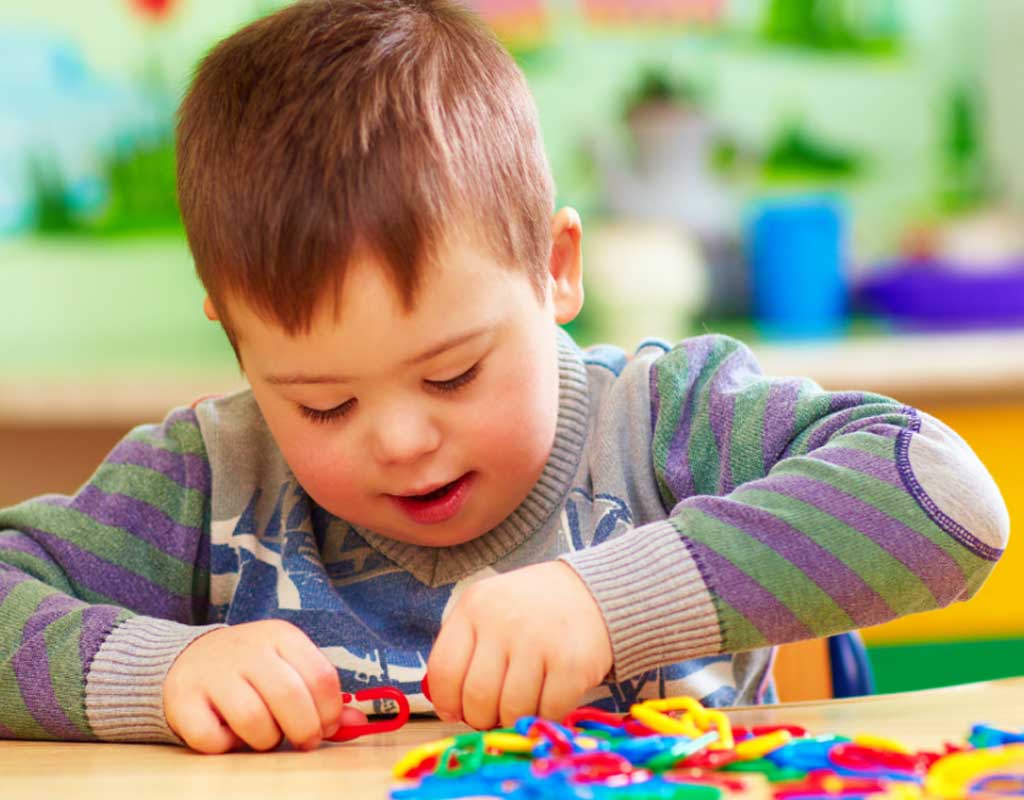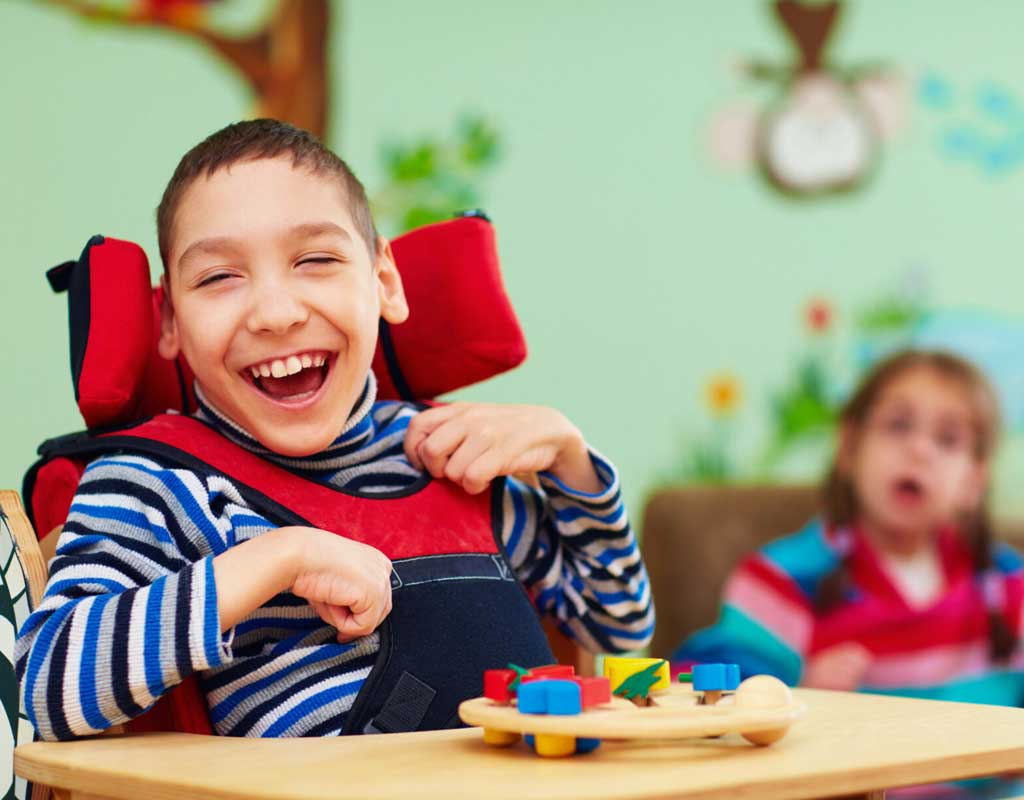What Is Autism
Autism is a neurodevelopmental condition impacting communication, behavior, and social interaction. Every individual with autism is unique, with distinct strengths and challenges.

About Autism Spectrum Disorder
• Autism spectrum disorder (ASD) is a developmental disability caused by differences in the brain.
• Some people with ASD have a known difference, such as a genetic condition. Other causes are not yet known.
• Scientists believe there are multiple causes of ASD that act together to change the most common ways people develop. We still have much to learn about these causes and how they impact people with ASD.
• Early intervention services can greatly improve the development of a child with ASD.
Understanding Autism Spectrum Disorder (ASD)
People with Autism Spectrum Disorder (ASD) may think, communicate, and interact differently from others. While there are often no physical features that set them apart, their abilities can vary widely. Some individuals may excel in conversation, while others may be nonverbal. Similarly, the level of support required differs; some individuals need significant help with daily tasks, while others can live and work independently.
ASD typically begins before the age of 3 and continues throughout a person’s life, though symptoms may evolve over time. Some children display signs of ASD as early as 12 months, while others may not show symptoms until they are 24 months or older. In some cases, children develop typically until 18 to 24 months and then experience a regression, losing previously acquired skills or halting developmental progress. Early identification and support are crucial in helping individuals with ASD reach their full potential.
What are the signs and symptoms of autism?
Autism characteristics are specific behaviors that healthcare providers observe when diagnosing autism and determining the support a child might need. These characteristics are diverse, and no two children exhibit the exact same traits. Providers typically group these behaviors into two main categories:
Social Communication and Interaction Difficulties: These affect how a child socializes and communicates with others.
Restricted and Repetitive Behaviors, Interests, or Activities: These influence how a child acts and engages with the world.
As a parent, it’s natural to look for signs of concern, like a fever or physical symptoms. However, autism characteristics aren’t indicators that something is wrong. Instead, they highlight differences in how a child experiences and interacts with the world. These cues can help identify areas where your child may need support to navigate expectations and demands often designed for neurotypical individuals.

How your child socializes
Socializing at age 2 is a lot different than socializing at age 5, 10 or 15. So, what these difficulties look like in your child can vary widely according to their age and a host of other factors — including other conditions they might have that affect their communication.
You may notice your toddler:
Doesn’t follow your gaze or look at things you’re pointing to.
Doesn’t respond to their name.
Seems uninterested in taking-turn games like peek-a-boo.
Doesn’t seek you out to share something they’ve discovered.
Looks away rather than looking you in the eye.
Uses your hand as a tool to pick up things they want.
Prefers to play by themselves (continuing beyond age 2).
How your child acts
You may notice your toddler:
• Repeats the same words or phrases (echolalia).
• Repeats the same motions — like flapping their hands, rocking their body or spinning in circles.
• Does the same thing over and over with a toy or part of a toy — like spinning the wheels of a toy car.
• Gets very upset by changes to their routine.
• Lines toys or objects up in a particular order and resists anyone changing it.
• Won’t eat foods of certain textures.
• Reacts strongly to certain fabrics or other things on their skin.
• Shows strong interest in a specific object you wouldn’t expect, like a wooden spoon or fan.
What strengths do autistic people have?
Strengths are unique to each person, and research has found a wide range of strengths among autistic people. Your child may have:
• The strength to speak out or “go against the crowd” even if it’s not the popular thing to do. • A strong sense of right vs. wrong, leading them to follow their moral compass even when no one’s watching. • The ability to express themselves directly and honestly. • A knack for connecting with people of all ages. • The ability to focus for long periods of time and gain expertise on a topic. • Strong nonverbal reasoning skills.
Treatment
There are several effective interventions that can help a child reach their full potential.:
- Applied behavioral analysis: Involves systematic study of the child’s functional challenges, which is used to create a structured behavioral plan for improving their adaptive skills and decreasing inappropriate behavior
- Social skills training: Done in group or individual settings, this intervention helps children with autism improve their ability to navigate social situations
- Speech & language therapy: Can improve the child’s speech patterns and understanding of language
- Occupational therapy: Can address adaptive skills deficits with activities of daily living, as well as problems with handwriting
- Parent management training: Parents learn effective ways of responding to problematic behavior and encouraging appropriate behavior in their child. Parent support groups help parents cope with the stressors of raising a child with autism
- Special education services: Are provided by schools under an Individual Education Plan and can include a range of services and accommodations for social communication deficits, restricted interests and repetitive behaviors. This can include special classes for very young children to address language, social skills and other needs.
- Treating co-occurring conditions: Children with autism are more likely to experience insomnia, attention-deficit/hyperactivity disorder (ADHD), intellectual disability, anxiety, and depression than peers without autism. These conditional also need to be addressed. The impact of these conditions can be reduced with the proper services, which can include any of the above, as well as psychotherapy and/or medication. Treating these conditions typically involves coordination with a pediatrician or primary care clinician.
- Medication: A child psychiatrist can evaluate for other mental health conditions and prescribe medication if appropriate. For example, autism-related irritability that does not respond to behavioral interventions can be reduced by medications such as aripiprazole and risperidone (the two medications approved by the Food and Drug Administration for irritability associated with autism), prescribed judiciously by a knowledgeable clinician in collaboration with the child’s parents. (Read more in the Parents’ Medication Guide from the American Academy of Child and Adolscent Psychiatry and APA)
Several complementary and alternative interventions involving special diets and supplements have been tried over the years. Most of these interventions, including therapies, diets, and “natural treatment,” do not have scientific evidence supporting them and can lead to false expectations. Parents should be very cautious about treatments that are advertised as being able to “cure” autism. Research into these types of interventions continues, and parents/caregivers interested in them should discuss them with their child’s treating clinician.
